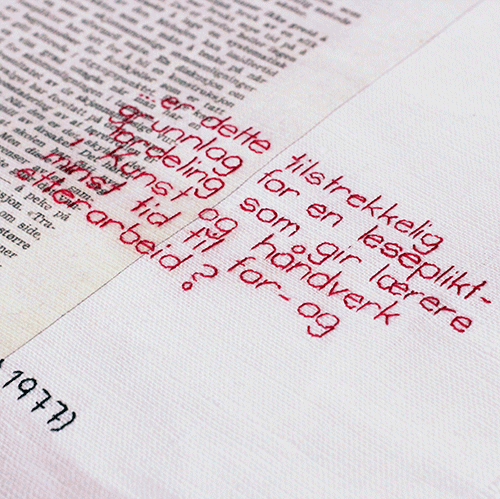Teachers scheduled classes in the subject Art and crafts - The background for the existence of an outdated teaching load in lower secondary school
DOI:
https://doi.org/10.7577/formakademisk.1845Keywords:
Art and crafts, school leaders, school, professional competence, teachers, lower secondary school, teaching load, scheduled classesAbstract
A teacher in the subject Art and crafts in lower secondary schools in Norway have less time for preparation of his teaching than teachers within other subjects. In this article we are looking for the background of this differentiation of teachers' scheduled classes, and find it in the ‘Teaching load Commission's report’ (Lesepliktutvalget) from 1977. There is, however, no good reasons why subjects receive different teaching load. Ten years later the committee appointed to consider teaching staff's future working conditions (UFA-utvalget) adds descriptions from each subjects curriculum as a foundation for the estimation of their teaching load. Even after the introduction of the curriculum L97, where the contents of the subject Art and crafts was made more explicit and the teachers got a heavier workload, the differences in teachers' scheduled classes were not changed. Teachers have called attention to this imbalance, but the teaching load has remained unchanged. School leaders, however, have expressed that the difference in teaching load is fair. In this article we discuss what can be the background for the maintenance of this outdated teaching load.

Downloads
Published
How to Cite
Issue
Section
License
Authors who publish with this journal agree to the following terms:
- Authors retain copyright and grant the journal right of first publication with the work simultaneously licensed under a Creative Commons Attribution 4.0 License that allows others to share the work with an acknowledgement of the work's authorship and initial publication in this journal.
- Authors are able to enter into separate, additional contractual arrangements for the non-exclusive distribution of the journal's published version of the work (e.g., post it to an institutional repository or publish it in a book), with an acknowledgement of its initial publication in this journal.
- Authors are permitted and encouraged to post their work online (e.g., in institutional repositories or on their website) prior to and during the submission process, as it can lead to productive exchanges, as well as earlier and greater citation of published work (See The Effect of Open Access).
- The author(s) must manage their economic reproduction rights to any third party.
- The journal makes no financial or other compensation for submissions, unless a separate agreement regarding this matter has been made with the author(s).
- The journal is obliged to archive the manuscript (including metadata) in its originally published digital form for at least a suitable amount of time in which the manuscript can be accessed via a long-term archive for digital material, such as in the Norwegian universities’ institutional archives within the framework of the NORA partnership.
The material will be published OpenAccess with a Creative Commons 4.0 License which allows anyone to read, share and adapt the content, even commercially under the licence terms:
This work needs to be appropriately attributed/credited, a link must be provided to the CC-BY 4.0 licence, and changes made need to be indicated in a reasonable manner, but not in any way that suggests that the licensor endorses you or your use.



